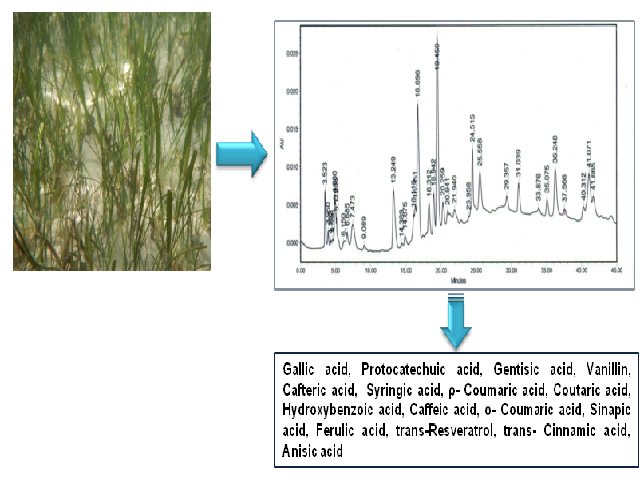Evaluation of In-vitro Antioxidant Activity of Seagrasses: Signals for Potential Alternate Source
DOI:
https://doi.org/10.5530/fra.2016.1.10Keywords:
Caffeic acid, DPPH, Free radicals, Phenolic compounds, Reactive oxygen species, Radical scavenging activityAbstract
Background and Aim: Natural antioxidants have gained unique attention in recent years. Because of the carcinogenicity of synthetic compounds, there is a dearth for antioxidants from natural origin. Currently, seagrasses, the marine plants have gained attention for their secondary metabolites. Hence, the present study aims to examine in vitro antioxidant activity of both leaf and rhizome extracts of six seagrass species and has not yet been investigated. Methods: Crude methanolic extracts of leaf and rhizome obtained, were evaluated for total phenolic contents using Folin-Ciocalteaus method. Antioxidant potential of seagrass extracts were evaluated using total antioxidant activity, DPPH, FRAP, ABTS assay, H2O2 and NO2 scavenging assay and the phenolic compounds present in potent extracts were profiled by HPLC. Results: Maximum phenolic content and antioxidant activity was exhibited by leaf and rhizome extracts of C. rotundata followed by H. uninervis. Higher DPPH radical scavenging activity was found in leaf (78.84 ± 0.87) and rhizome extracts (75.480 ± 0.97) of C. rotundata and the lowest scavenging activity was found in the leaf and rhizome extracts of H. ovata (12.01 ± 0.63 and 5.769 ± 1.14). Among six species, C. rotundata exhibited higher radical scavenging activity containing the potential phenolic compounds. Conclusion: Present study portrays that leaf and rhizome extracts of C. rotundata acts as a potential source of antioxidant compounds with predominant presence of caffeic acid and ρ-coumaric acid that paves a way for the application of these compounds in both food and pharmaceutical industries as a multipotent antioxidant.
Downloads
Metrics





